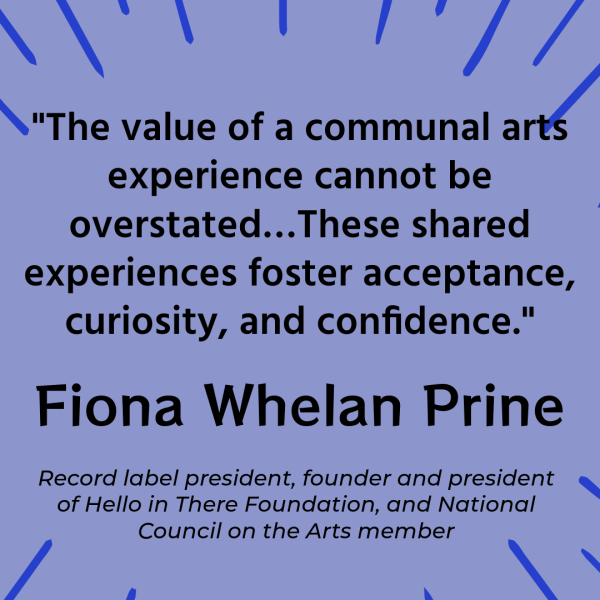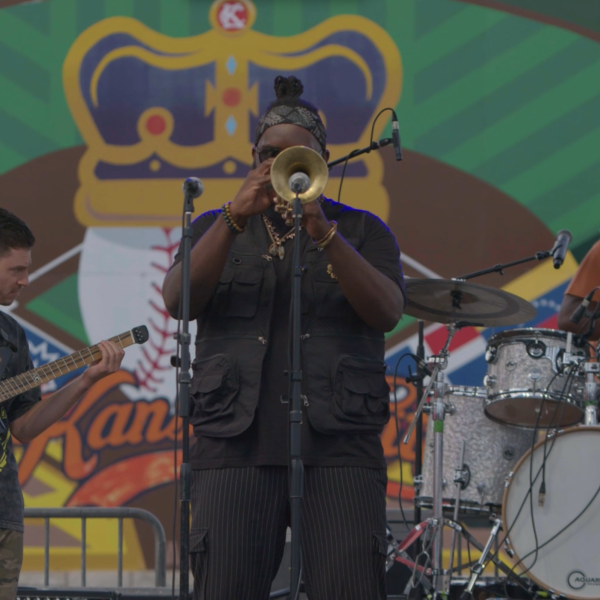Grant Spotlight: ShaLeigh Dance Works
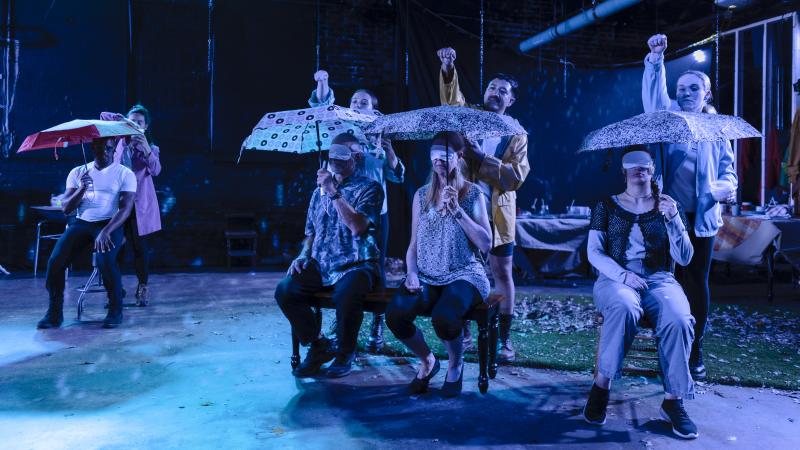
enVISION: Sensory Beyond Sight, an immersive interdisciplinary performance designed for low-vision and blind individuals. An NEA grant to ShaLeigh Dance Works will support enVISION: The Next Chapter. Photo by Slater Mapp, courtesy of ShaLeigh Dance Works
Planning a park scene for ShaLeigh Dance Works’ performance of enVISION: Sensory Beyond Sight involved a series of trial and error. Dropping rice onto umbrellas didn’t evoke the real sound of rain, and fallen leaves on the stage felt just like that — not the soft crunch of leaves, grass, and soil. Instead, the creative team pivoted, using salt bath crystals and laying down Astroturf, trying to get as close as possible to those real sensations.
It was essential that the creative team get these details right as enVISION: Sensory Beyond Sight, which was supported in part by an Arts Endowment grant, was an immersive dance-theater work that centered the experience of blind and low-vision individuals.
ShaLeigh Comerford, founder and artistic director of ShaLeigh Dance Works, relied on experts, blind and low vision individuals, to provide feedback on the different aspects of the performance, helping her artistic team perfect the specific feel, smell, and sounds associated with different places and seasons.
Comerford said that from the start, all of the enVISION collaborators were asked what they needed to thrive while putting together the work, and by keeping those needs in mind, they were able to create a space where everyone felt safe to fail and grow together. In the process of creating the work, it was also essential that accessibility, not only for blind and low vision individuals but also others with differing needs, such as people who use wheelchairs, be integrated from the beginning.
“We couldn't have done it without our experts because we were really wanting to key in and hone in on moments that felt accessible to all,” she said. “That allowed language to be visceral, not visual, and to create that sense of agency however you experience the show. You weren't experiencing moments of self-doubt, but you were being triggered inside of your own memories and your own experiences.”
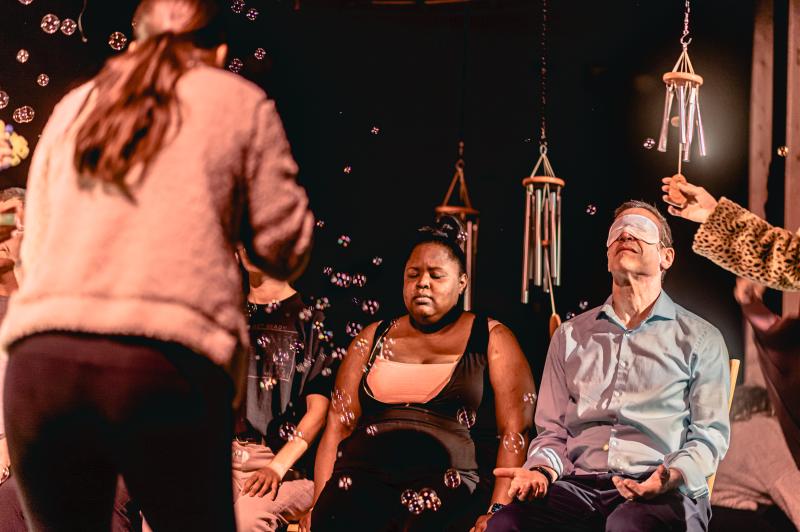
Audience members during an enVISION: Sensory Beyond Sight performance. Photo by Slater Mapp, courtesy of ShaLeigh Dance Works
There were four different ways for audience members to experience the show. You could be guided through the set by a performer while wearing a blindfold, be seated in an “activated seat” blindfolded, receiving additional stimulation such as through touch or fragrance, or sit in a non-activated seat, either blindfolded or not.
The team used white blindfolds as opposed to black, an important choice that conveyed blindness does not necessarily equate to total darkness – there is a spectrum of vision which involves light and other kinds of information.
enVISION, which opened the 89th American Dance Festival’s Season, had five sold-out performances at The Fruit in Durham, NC, where the company is based. Comerford was shocked the show sold out – it was the same week a Broadway tour of Hamilton was in town.
“It was better received than we realized and people were really engaged with it—people left changed and interested,” Comerford said. “One of the things that [enVISION co-creator] DJ [Robinson] and I realized is that change never happens when we're not aware of why it needs to. So, creating an opportunity for sighted people to really step into that world [of low vision and blind people] created an empathic bridge that could actually generate that spark for desired change.”
The company is already hard at work on their next immersive work, enVISION: The Next Chapter, which will also incorporate two engagement programs, Movement Mentor Training and enVISION's Tool Box, and is supported by another Arts Endowment grant.
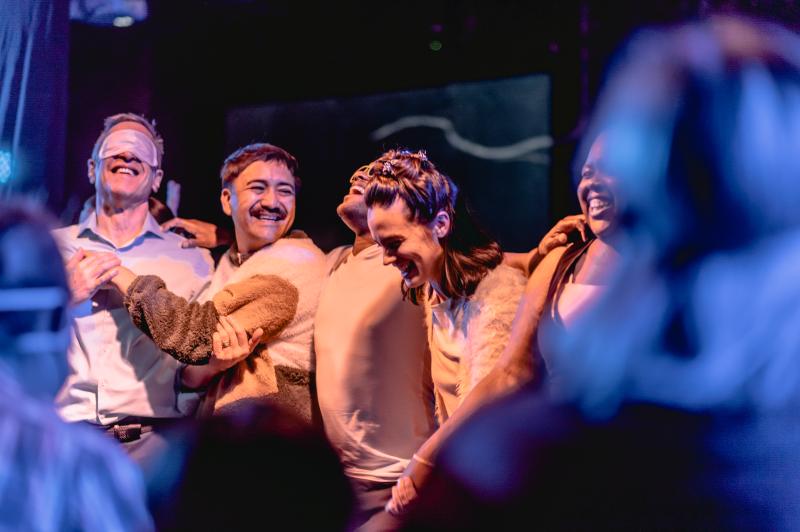
enVISION: Sensory Beyond Sight performers and audience members. Photo by Slater Mapp, courtesy of ShaLeigh Dance Works
Through the experience of putting on Sensory Beyond Sight, the team at ShaLeigh Dance Works realized there was an opportunity to cultivate what Comerford calls the “movement mentor relationship.” This new program, which is in development now, will train sighted dancers to accompany low vision and blind people to public dance classes, creating greater access and inclusion in the dance space.
The toolkit will document the company’s success and failures, offering up best practices that can be replicated in other programs across North Carolina.
Comerford notes that failure is an inevitable part of the process, and that access work is ongoing.
“It just becomes a part of the curiosity and the pre-planning,” she said. “People with differing abilities that don't include visual impairment came to me after the [enVISION] show and say, ‘You told my story up there, and for a minute I didn't feel alone,” Comerford said. “I think the lens of access and inclusion is really a lens that gives us the opportunity to create connection where there's not been connection.”


